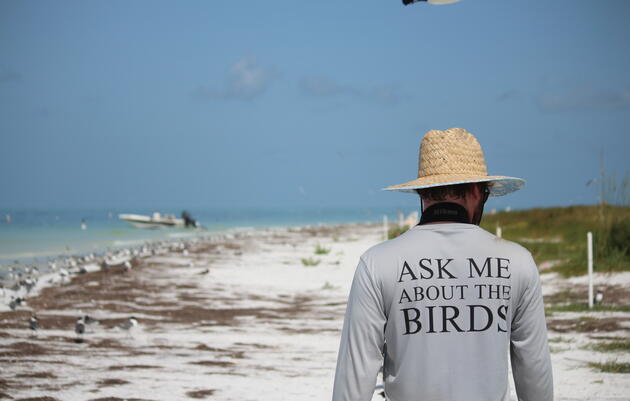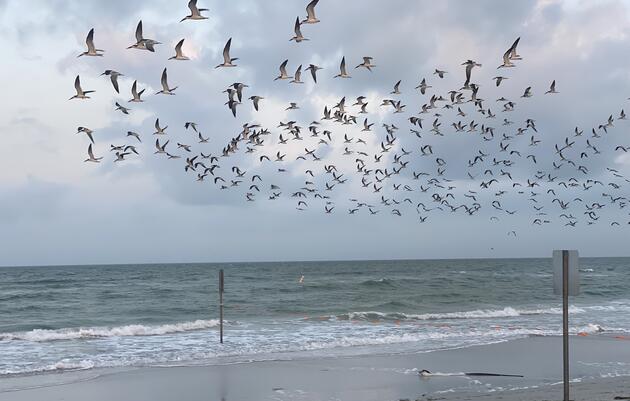Audubon Florida monitors hundreds of nesting sites across Florida's beaches, dunes, and barrier islands. We couldn't do it without our volunteers! To learn more about life as a coastal volunteer, we asked Ash Eggers (she/they) about sea and shorebirds on Alligator Point.
Q. How did you become involved as a volunteer with Audubon Florida's coastal program?
I had just finished reading a recent library checkout, "The Race to Save the Lord God Bird" by Phillip Hoose. In the book, there is a chapter about the history of the Audubon Society and how those early community efforts had a direct impact on birds who were brought to the brink of extinction due to settler colonialism and the exploitative feather trade. It was really inspiring to read that direct action can have an immediate impact on the well-being of birds and other wildlife. Every time I see a Snowy Egret or Great Egret, I think about how lucky I am to be able to see these birds today. This inspired me to look up how I could volunteer with my state or local Audubon chapter and that's when I found out about the Shorebird Steward program.
Q. What coastal areas do you monitor? What do you like about these landscapes?
I monitor a beach in the traditional homelands of the Apalachee Indians of the Talimali Band, many of whom now live in Pineville, Louisiana due to forced removal. Some now call this beach Phipps Preserve on the far west end of Alligator Point in the Panhandle. I'm embarrassed to say for someone who has lived in coastal areas most of my life, I rarely get to the beach. For that reason, I would say what I like most about this landscape is how different it is from the hardwood forests and pine flats I see on a daily basis about an hour north of the Gulf. The white sand, clear water, towering pines, and plethora of shorebirds leave me awestruck every time. I feel very lucky to be able to spend some time out there - it is always rejuvenating and fuels the flame of my passion to do what I can to help protect these habitats.
Q. Describe a moment in the field that is memorable to you from this season:
Please don't tell the birds, but the most memorable moment for me involved an animal from a completely different taxa. I had just finished a long day of monitoring on July Fourth and, as I was walking back to the gate to the preserve along the Gulf side, I spotted what I guessed to be a five-foot long bull shark swimming just a foot or two from the shore. It was swimming parallel to me and in the same direction I was headed. We got to "walk together" for a few minutes. I have never been so lucky as to see a wild shark despite a lifetime of living near beaches, so this was a really magical moment for me. It was also a wonderful reminder that these ecosystems are home to countless animals and plants that depend on them for their survival. As for the most memorable bird moment, I would say it was simply being able to see various vulnerable and threatened species just have a place to rest and raise their young in relative peace, which all living beings deserve.






